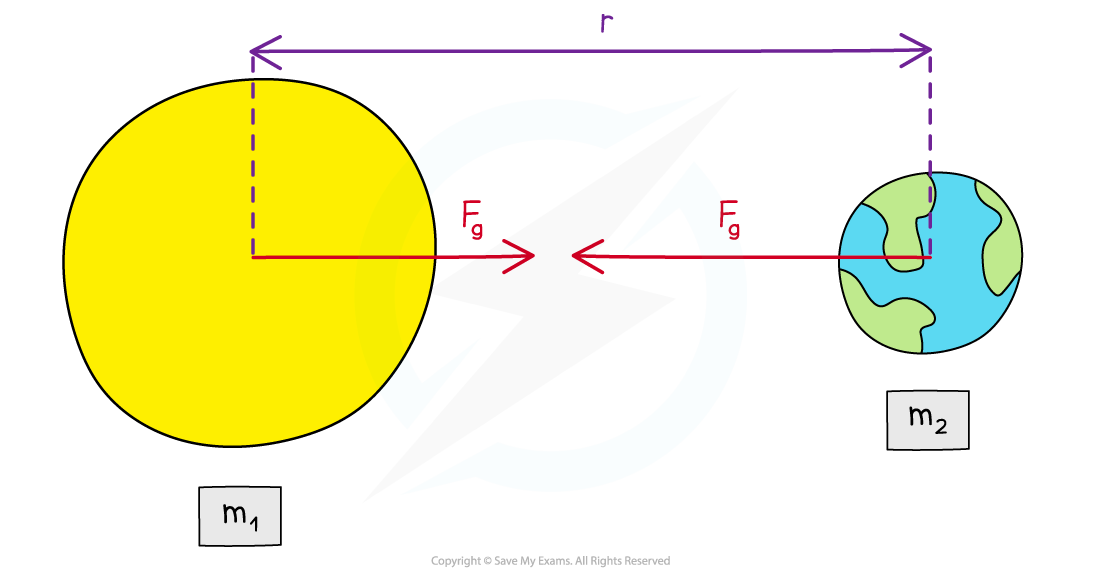Newton’s Law of Universal Gravitation (Edexcel International A Level (IAL) Physics): Revision Note
Exam code: YPH11
Newton's Law of Universal Gravitation
The gravitational force between two masses, e.g., between the Earth and the Sun, is defined by Newton’s Law of Universal Gravitation
Newton’s Law of Universal Gravitation states:
The gravitational force FG between two masses m1 and m2 is proportional to the product of their masses and inversely proportional to the square of their separation, r
In equation form, this is written as:

Where:
FG = gravitational force between two masses (N)
G = Newton’s gravitational constant
m1 and m2 = mass of body 1 and mass of body 2 (kg)
r = distance between the centre of the two masses (m)
The 1/r2 relation is called the ‘inverse square law’
This means that if the distance between two masses doubles, r becomes 2r
Therefore, 1/r2 becomes 1/(2r)2, which is equal to 1/4r2
Hence, the gravitational force between the two masses reduces by a factor of four

The gravitational force between two masses is defined by Newton’s Law of Universal Gravitation
Worked Example
A satellite with mass 6500 kg is orbiting the Earth at 2000 km above the Earth's surface. The gravitational force between them is 37 kN.
Calculate the mass of the Earth.
(Radius of the Earth = 6400 km)
Answer:

Examiner Tips and Tricks
A common mistake in exams is to forget to add together the distance from the surface of the planet and its radius to obtain the value of r. The distance r is measured between the centre of each mass, which is from the centre of the planet to the centre of the satellite!
Another common mistake is forgetting that the distance between masses m1 and m2 is squared. Remember this whenever you use Newton's Law of Universal Gravitation!

Unlock more, it's free!
Did this page help you?